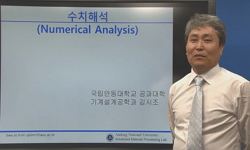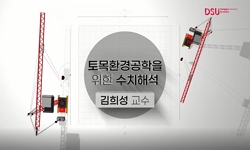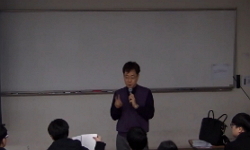쾌적한 지상공간의 삶을 위하여 전세계적으로 지하공간 개발이 활발히 이루어지고 있으며, 그 규모도 점차 대형화하고 었는 추세이다. 하지만 밀집한 상부 구조물에 대한 피해 우려와 기존 ...
http://chineseinput.net/에서 pinyin(병음)방식으로 중국어를 변환할 수 있습니다.
변환된 중국어를 복사하여 사용하시면 됩니다.
- 中文 을 입력하시려면 zhongwen을 입력하시고 space를누르시면됩니다.
- 北京 을 입력하시려면 beijing을 입력하시고 space를 누르시면 됩니다.

구조물 근접 터널시공시 최적의 보강범위에 관한 연구 = A study on the optimum range of reinforcement in tunneling adjacent to structures
한글로보기https://www.riss.kr/link?id=A100776750
-
저자
이홍성 (현대건설(주) 기술/품질 개발원) ; 김대영 (현대건설(주) 기술/품질 개발원) ; 천병식 (한양대학교) ; 정혁상 (한양대학교) ; Lee, Hong-Sung ; Kim, Dae-Young ; Chun, Byung-Sik ; Jung, Hyuk-Sang
- 발행기관
- 학술지명
- 권호사항
-
발행연도
2009
-
작성언어
Korean
- 주제어
-
등재정보
KCI등재
-
자료형태
학술저널
-
수록면
199-211(13쪽)
-
KCI 피인용횟수
5
- DOI식별코드
- 제공처
-
0
상세조회 -
0
다운로드
부가정보
국문 초록 (Abstract)
쾌적한 지상공간의 삶을 위하여 전세계적으로 지하공간 개발이 활발히 이루어지고 있으며, 그 규모도 점차 대형화하고 었는 추세이다. 하지만 밀집한 상부 구조물에 대한 피해 우려와 기존 지하공간과의 간섭 등으로 인하여 새로운 지하공간 건설 시 많은 주의가 필요한 실정이다. 천층에 굴착되는 터널의 경우, 굴착으로 인한 상부 구조물의 피해를 최소화하기 위하여 구조물 하부 및 터널 주변지반의 보강이 필수적이나 그 적정범위에 대한 기준은 마련되어있지 않은 설정이다. 본 논문에서는 직경 20 m의 대단면 터널이 구조물 하부에 시공되는 경우에 대해서 수치해석을 실시하여, 터널과 구조물간의 수직 및 수평이격거리에 따른 구조물 피해정도를 조사하였고 보강이 필요한 경우에는 각각의 경우별로 최적의 보강범위를 제시하였다. 본 논문에서 다룬 지반조건에 대한 해석결과, 수직이격거리가 0.50(D 터널등가직경)인 경우에는 수평이격거리가 0D에 근접하면서부터 보강이 필요한 것으로 나타났으며, 수직이격거리가 0.75D인 경우에는 터널이 구조물 하부에 위치할 때 보강이 필요하였다. 또한 수직이격거리가 1D 이상인 경우에는 수평이격거리에 상관없이 보강이 필요 없는 것으로 나타났다. 구조물 기초지반 보강범위는 갚이 7 m, 폭은 구조물 전제를 포함하여 터널 측벽에서 5 m 벗어난 곳까지이다. 상황에 따라 적절한 보강공법을 선택하였을 경우, 이와 같은 보강범위는 구조물 안정에 충분한 것으로 나타났다.
다국어 초록 (Multilingual Abstract)
Development of underground space is actively performed globally for better life in the surface, and the scale of the space is increasing. Extreme care should be taken in the construction of the underground space in urban areas in order to avoid damage...
Development of underground space is actively performed globally for better life in the surface, and the scale of the space is increasing. Extreme care should be taken in the construction of the underground space in urban areas in order to avoid damage of adjacent structures and interference with existing underground space. In case of shallow tunnels, reinforcement of ground and structures is necessary to minimize the damage to structures due to excavation but any standard for optimum range of the reinforcement has not been established yet. In this paper, a series of numerical analyses have been performed for a 20 m diameter tunnel excavated underneath a structure to investigate the degree of damage of the structure according to vertical and horizontal spacing between the tunnel and structure. In addition to that, optimum range of reinforcement is presented for each case where reinforcement is required. It has been observed that the reinforcement is necessary for the ground condition adapted in the analyses as follows: (1) if horizontal spacing ($S_{H}$) approaches to 0D (D: equivalent diameter of tunnel) for vertical spacing (Sv) of 0.5D, and (2) if tunnel exists underneath the structure for vertical spacing (Sv) of 0.75D. The reinforcement is not necessary for Sv of 10 regardless of $S_{H}$. It also has been obtained that the optimum ranges of the reinforcement around structure foundation are 7 m in depth and whole width of the structure and 5 m beyond tunnel sidewall. These reinforcememt ranges have been confirmed to be enough for stability of the structure if types of reinforcement method is appropriately selected.
참고문헌 (Reference)
1 (사)한국터널공학회, "터널의 이론과 실무"
2 이홍성, "미고결 암반층에서의 붕괴터널 대책사례" 2004
3 김만식, "단기 하천수질 예측을 위한 신경망모형" 한국지반환경공학회 3 (3): 11-17, 2002
4 천병식, "그라우트재의 호모겔과 샌드겔의 강도증진 성상에 관한 연구" 2001
5 首都高速道路公團 保全施設部, "首都高速道路に近接する構造物の施工指導要領書(案)"
6 土木硏究所 基礎硏究室, "近接基礎設計施工要領(案)" 土木硏究所資料第 1983
7 (社)日本藥液注入協會, "藥液注入工法 設計・施工指針)"
8 Cording, E. J, "Use of empirical data for braced excavations and tunnels in soil" Lecture Series 1984
9 Lee, H. S, "Urban tunneling under existing structure" 2007
10 Jacobsz, S. W, "Tunnelling effect on driven Piles" 1-15, 2001
1 (사)한국터널공학회, "터널의 이론과 실무"
2 이홍성, "미고결 암반층에서의 붕괴터널 대책사례" 2004
3 김만식, "단기 하천수질 예측을 위한 신경망모형" 한국지반환경공학회 3 (3): 11-17, 2002
4 천병식, "그라우트재의 호모겔과 샌드겔의 강도증진 성상에 관한 연구" 2001
5 首都高速道路公團 保全施設部, "首都高速道路に近接する構造物の施工指導要領書(案)"
6 土木硏究所 基礎硏究室, "近接基礎設計施工要領(案)" 土木硏究所資料第 1983
7 (社)日本藥液注入協會, "藥液注入工法 設計・施工指針)"
8 Cording, E. J, "Use of empirical data for braced excavations and tunnels in soil" Lecture Series 1984
9 Lee, H. S, "Urban tunneling under existing structure" 2007
10 Jacobsz, S. W, "Tunnelling effect on driven Piles" 1-15, 2001
11 Lee, Y. J, "Tunnelling adjacent to a row of loaded piles" Ph. D Thesis 2004
12 Attewell, P. B, "Soil movements induced by tunnelling and their effects on pipelines and structures" Blackie 1986
13 Sowers,G.F, "Shallow foundation”, Foundation Engineering" G. A. Leonards 525-, 1962
14 배규진, "Neural Network을 이용한 터널 설계적정성 평가용 Expert System 개발" 건설기술연구원 1998
15 Hergarden, H. J. A. M, "Ground movements due to tunnelling influence on pile foundation" 519-524, 1996
16 Attewell, P. B, "Ground movements caused by tunelling in soil" 812-948, 1977
17 Son, M. R, "Estimation of building damage due to excavation-induced ground movements" ASCE 131 (131): 162-177, 2005
18 Morton, J. D, "Effects of tunnelling on the bearing capacity and settlements of piled foundations" IMM 57-68, 1979
19 Cording, E. J, "Displacements around soft ground tunnels" Session IV,Tunnels in Soil 5th Pan American Congress on Soil Mechanics and Foundation Engineering, 1975
20 Bjerrum,L, "Discussion to european conference on soil mechanics and foundation engineering" 111 : 135-, 1963
21 Peck, R, "Deep excavations and tunneling in soft ground" State-of-the-Art 225-290, 1969
22 Baumann, V, "Das soilcrete-verfahren in der baupraxis" Vorträge der Baugrundtagung 1984
23 Boscardin, M. D, "Building response to excavation-induced settlement" 115 (115): 1-21, 1989
24 Burland, J. B, "Assessment of risk of damage to buildings due to tunnelling and excavation" 1995
동일학술지(권/호) 다른 논문
-
Bulk Emulsion 기계화 장전시스템을 이용한 대단면 장대터널 시공사례연구
- 한국터널지하공간학회
- 윤지선
- 2009
- KCI등재
-
c-${\phi}$ 지반에서의 아칭현상을 고려한 원형수직터널 토압: I. 이론
- 한국터널지하공간학회
- 김도훈
- 2009
- KCI등재
-
수치해석을 이용한 세그먼트라이닝의 수리거동과 누수제어 연구
- 한국터널지하공간학회
- 신종호
- 2009
- KCI등재
-
해저터널의 불연속체 연계해석 시 잠재적 이완영역 평가 방법의 타당성 연구
- 한국터널지하공간학회
- 유광호
- 2009
- KCI등재
분석정보
인용정보 인용지수 설명보기
학술지 이력
| 연월일 | 이력구분 | 이력상세 | 등재구분 |
|---|---|---|---|
| 2022 | 평가예정 | 재인증평가 신청대상 (재인증) | |
| 2019-01-01 | 평가 | 등재학술지 유지 (계속평가) |  |
| 2016-01-01 | 평가 | 등재학술지 선정 (계속평가) |  |
| 2015-12-01 | 평가 | 등재후보로 하락 (기타) |  |
| 2011-01-27 | 학회명변경 | 한글명 : 한국터널공학회 -> 사단법인 한국터널지하공간학회영문명 : 미등록 -> Korean Tunnelling and Underground Space Association |  |
| 2011-01-27 | 학술지명변경 | 한글명 : 터널기술 -> 한국터널지하공간학회 논문집 |  |
| 2011-01-01 | 평가 | 등재학술지 유지 (등재유지) |  |
| 2009-01-01 | 평가 | 등재학술지 유지 (등재유지) |  |
| 2006-01-01 | 평가 | 등재학술지 선정 (등재후보2차) |  |
| 2005-05-20 | 학술지명변경 | 외국어명 : 미등록 -> TUNNELLING TECHNOLOGY |  |
| 2005-01-01 | 평가 | 등재후보 1차 PASS (등재후보1차) |  |
| 2003-01-01 | 평가 | 등재후보학술지 선정 (신규평가) |  |
학술지 인용정보
| 기준연도 | WOS-KCI 통합IF(2년) | KCIF(2년) | KCIF(3년) |
|---|---|---|---|
| 2016 | 0.44 | 0.44 | 0.41 |
| KCIF(4년) | KCIF(5년) | 중심성지수(3년) | 즉시성지수 |
| 0.42 | 0.38 | 0.634 | 0.18 |




 ScienceON
ScienceON






